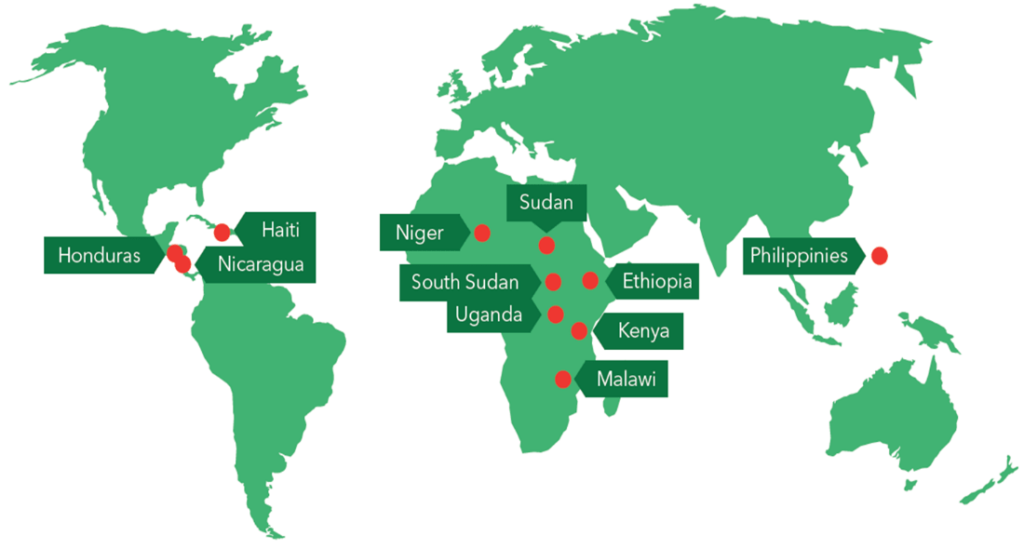In 2007, GOAL completed a comprehensive KAPB (Knowledge, Attitudes, Practices and Beliefs) survey in La Moskitia, Honduras, to gain a better understanding of the factors influencing communities’ disaster resilience. In 2010, GOAL developed a more targeted survey to assess disaster resilience, at this time incorporating over 210 questions on a variety of disaster resilience aspects, including questions from the assessment of “disaster resilience characteristics” based on the work of John Twigg. Then, in 2010 and 2011, this tool was applied in La Moskitia, proving to be very effective in measuring progress in disaster resilience capacities and consistent with other monitoring and evaluation tools. Throughout 2013-14, GOAL undertook a comprehensive revision of its work on measuring community disaster resilience by involving extensive field testing and technical validation in 4 countries. The end result was the ARC-D toolkit (then called the GOAL Toolkit for Measuring Community Disaster Resilience), containing 30 key resilience components as the basis of its evaluation.

Starting in 2015, after increased interest in applying the ARC-D from this and other GOAL country programmes, NGOs and government actors, an extensive roll-out across 11 countries from Africa, Asia, Central America and the Caribbean was completed. As a result, there are now 13 countries across three continents where the ARC-D studies were applied for community disaster resilience measurement: Honduras, Nicaragua, Cuba, Colombia, Haiti, Niger, Sudan, South Sudan, Ethiopia, Kenya, Uganda, Malawi, and the Philippines. Throughout the initial dissemination and validation process, the ARC-D was shared with disaster risk management specialists including from national risk management authorities, UN agencies, other NGOs and institutional donor representatives in Central America, the Caribbean and Eastern and Southern Africa. Their valuable feedback was incorporated into the final version of this toolkit.

